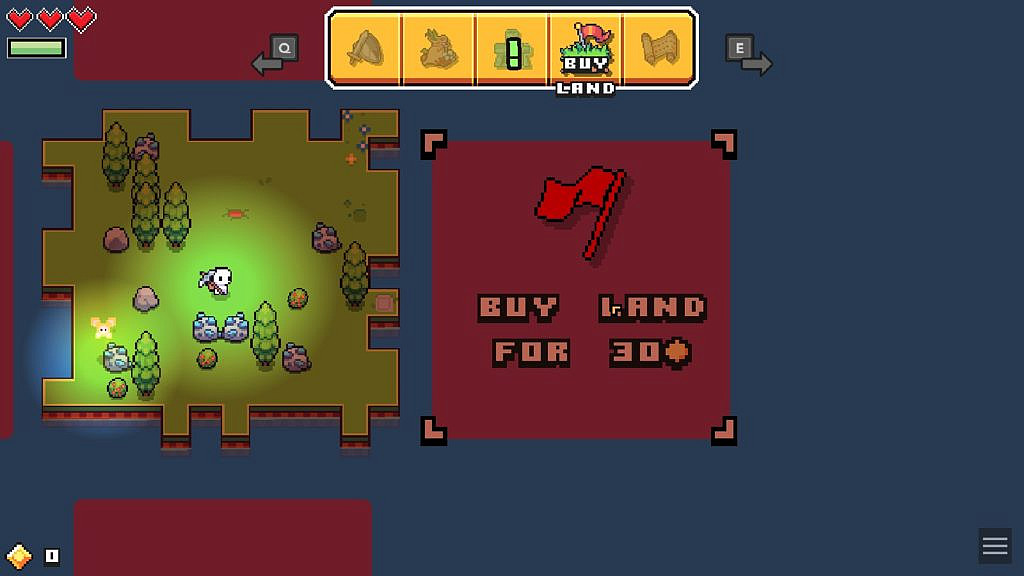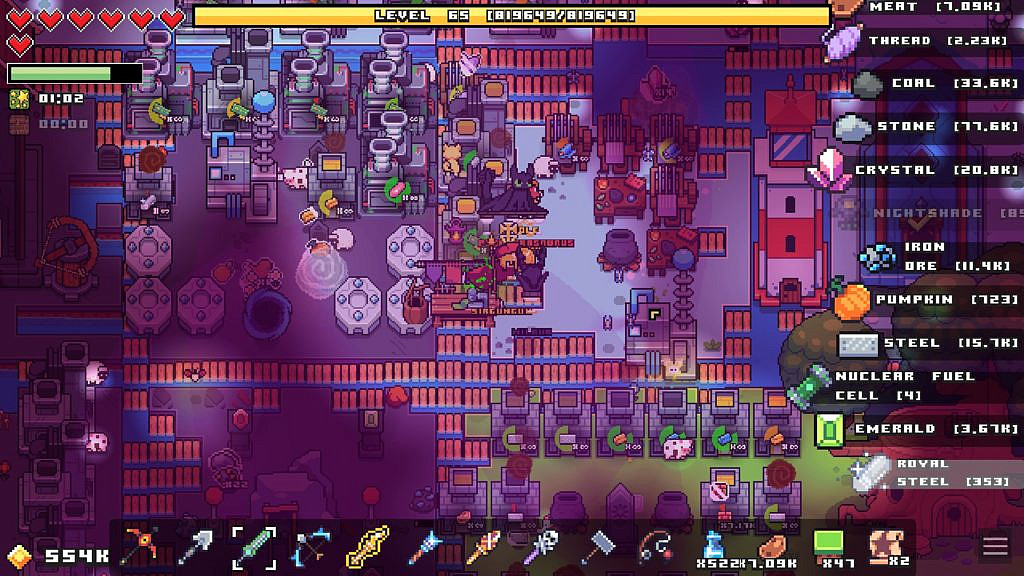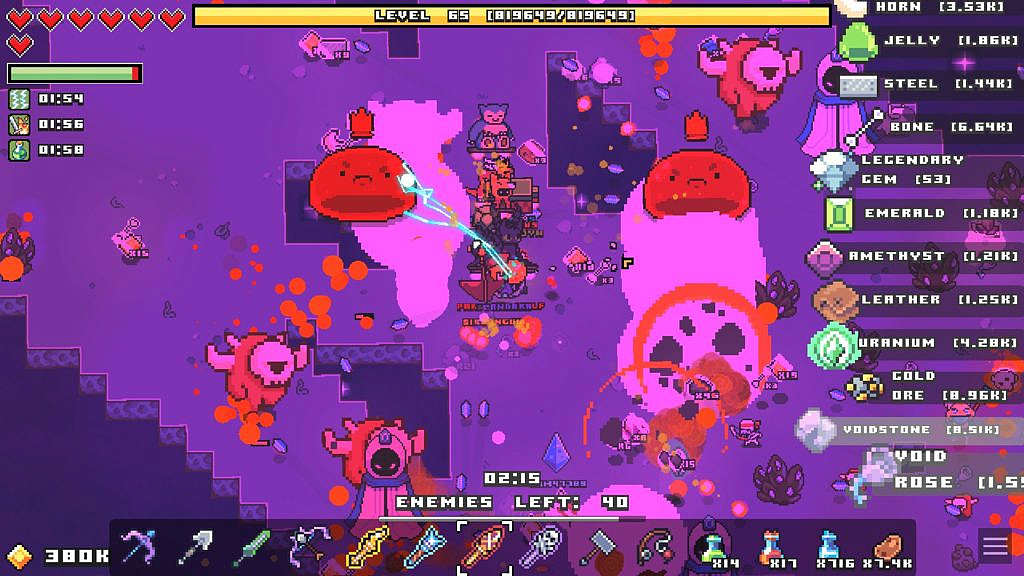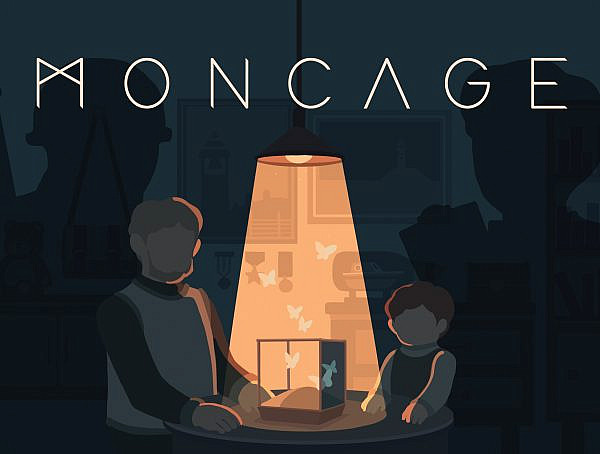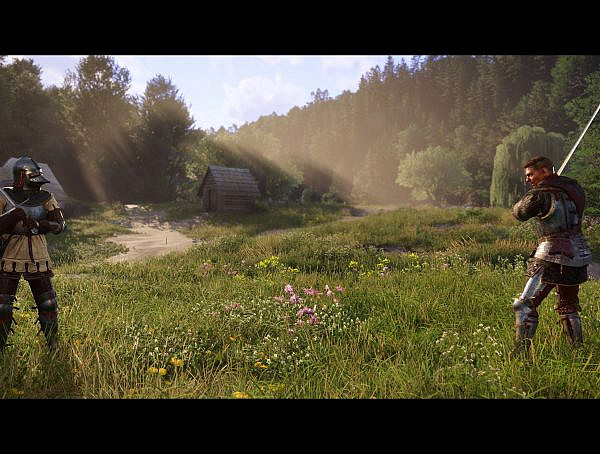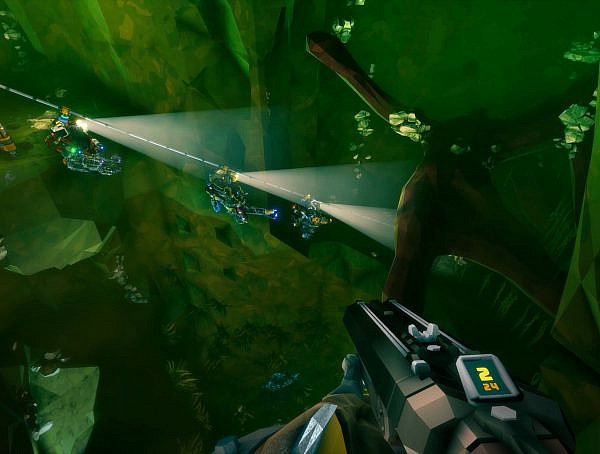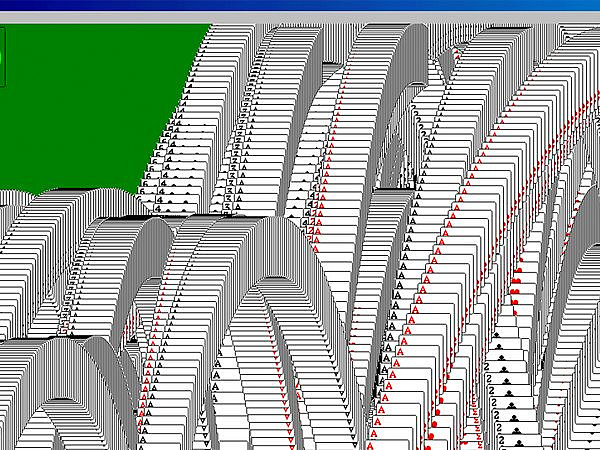Forager features a humanoid character with tools to form the terrain around them, collect items and upgrades, obtain currency to expand their territory, and slay monsters. Trees, ores, flowers, and plants can be gathered for building new structures and crafting new, more powerful equipment. There is no real backstory to the game; the essence of the game is to gather and process all resources, and the world unveils itself through progression.
Day 1 – Expansion
To increase the character’s power, the player can gain more levels. Gathering and refining resources and killing monsters give experience points, which eventually lead to levels. The player can choose any skill that is available in a 64-level skill tree. The skills are divided into four categories: industry, foraging, economy, and magic. Depending on the preferred playstyle, there are different routes to fill up the skill tree. I chose the industrial skills first, as I wanted to expand my base as efficiently as possible.
At first, buying new lands (biomes), solving puzzles, and setting up the initial base makes the player feel like a true explorer in new lands. The upgrades and levels come slowly and gradually with the grind, and although it is very time-consuming, the progression feels like a magical journey through time. Upgrades start from primitive furnaces and later move on to advanced factories through the skill system.
The biomes feature different elements, such as snow, fire, sand, and earth, and these different types of lands give nice diversity to the game. All these biomes contain exciting and rather difficult puzzles that the player needs to complete to progress with their upgrades. As the player advances further, the expansion costs more currency, which can be obtained by selling products – in other words, more grinding.
Factories at work in three different biomes
It takes a lot of time to reach the endgame content. The progression is enjoyable until the last two upgrades. However, after unlocking all the biomes the gameplay becomes monotonous, and the grind loses its meaningfulness. The player easily gets stuck trying to get the final upgrades. They are left with nothing to do but to wait for resources to spawn, as the automatic collection and processing features do everything in the player’s stead. The only alternative is to enter the endgame area called the void biome. There, the player can gradually progress through waves of monsters that reward rare materials for the final upgrades.
Grinding for rare resources in the void biome
The balance of the endgame content feels off. The resources appear too slowly, and it is necessary to simply wait and repeatedly enter the void biome for the rarer resources. The as pect of exploration becomes obsolete, and the grind that earlier in the game provided satisfaction to the player, feels simply laborious. However, I would still recommend this game to people who are enthusiastic about endless grinding.
Game info
Developer: HopFrog
Publisher: Humble Games
Genres: Open-World, Survival, Adventure, Single-Player
Release date: 18th of April 2019 (Microsoft Windows, Linux); 30th of July 2019 (PlayStation 4, Nintendo Switch); 16th of July 2020 (Xbox One)
PEGI-rating: 3 and over
Platforms: Microsoft Windows, Linux, PlayStation 4, Nintendo Switch, Xbox One
Screenshots by the author.
You might also like
More from Game Reviews
Kingdom Come: Deliverance II – A Sequel Worthy of a Knight
KCD II delivers a living, breathing medieval roleplaying game to its players. #RPG, #kingdomcome, #openworld
Mining, Mayhem, and Bugs: A Deep Rock Galactic Review
Fight monsters, mine riches, and cause chaos with your dwarf crew — welcome to Deep Rock Galactic!
Microsoft Solitaire: classic games to kill time
Perhaps the most played games in offices worldwide, Microsoft Simulator is a pinacle of design from the era where games …







